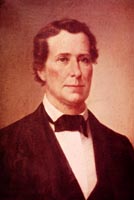From Middleton House Museum website:
"In 1865 a detachment of the 56th New York regiment occupied Middleton Place. On February 22nd, the main house and flanker buildings were ransacked and burned, the ground strewn with books, paintings and other family treasures. At the close of the war, with financial help from his sister, Eliza Middleton Fisher of Philadelphia, and with a small income from phosphate mining, Williams managed to hold on to the family plantation. The south flanker was the least damaged and Williams eventually was able to make it the family home."
From Middleton House Museum website:
"In 1865 a detachment of the 56th New York regiment occupied Middleton Place. On February 22nd, the main house and flanker buildings were ransacked and burned, the ground strewn with books, paintings and other family treasures. At the close of the war, with financial help from his sister, Eliza Middleton Fisher of Philadelphia, and with a small income from phosphate mining, Williams managed to hold on to the family plantation. The south flanker was the least damaged and Williams eventually was able to make it the family home."
Family Members
Advertisement
Explore more
Sponsored by Ancestry
Advertisement

















